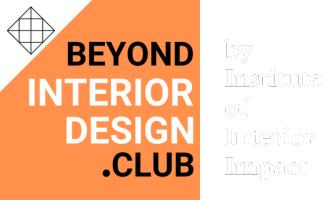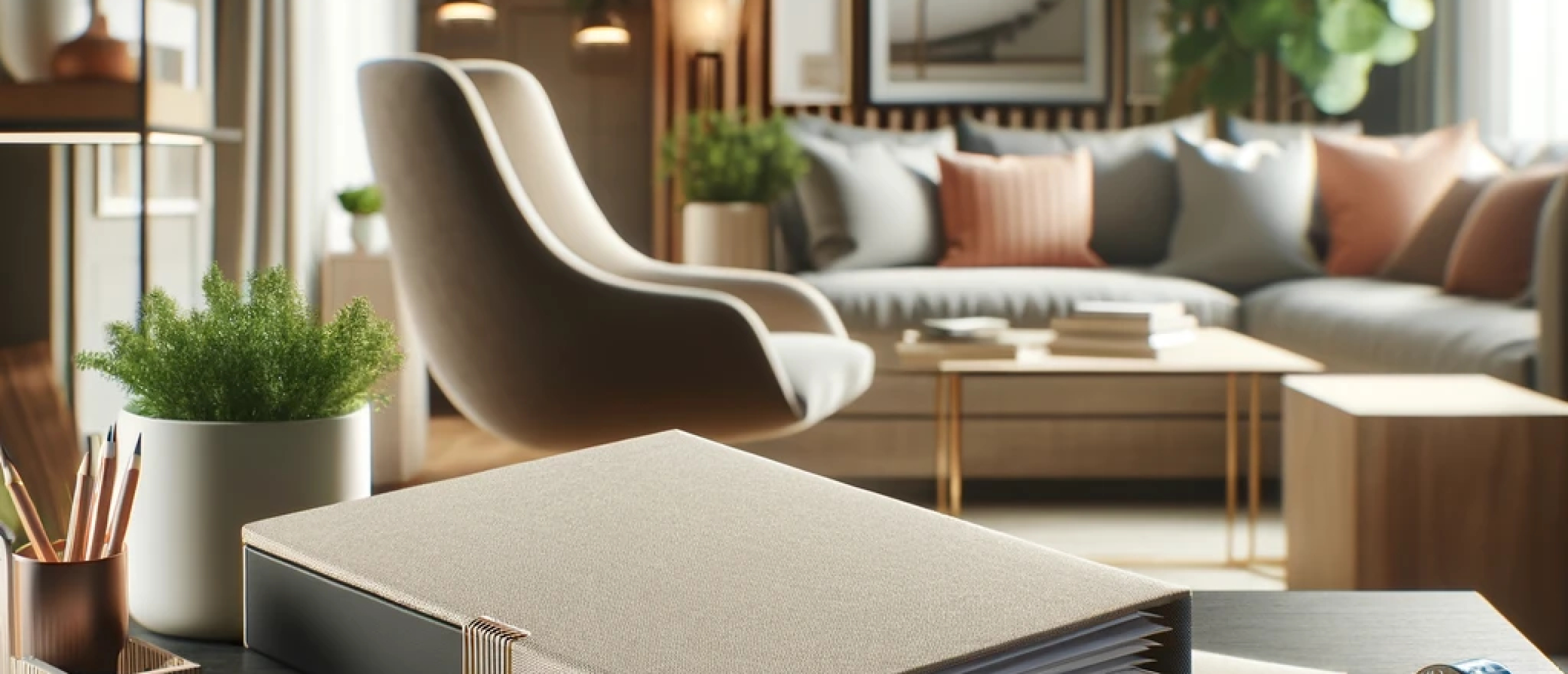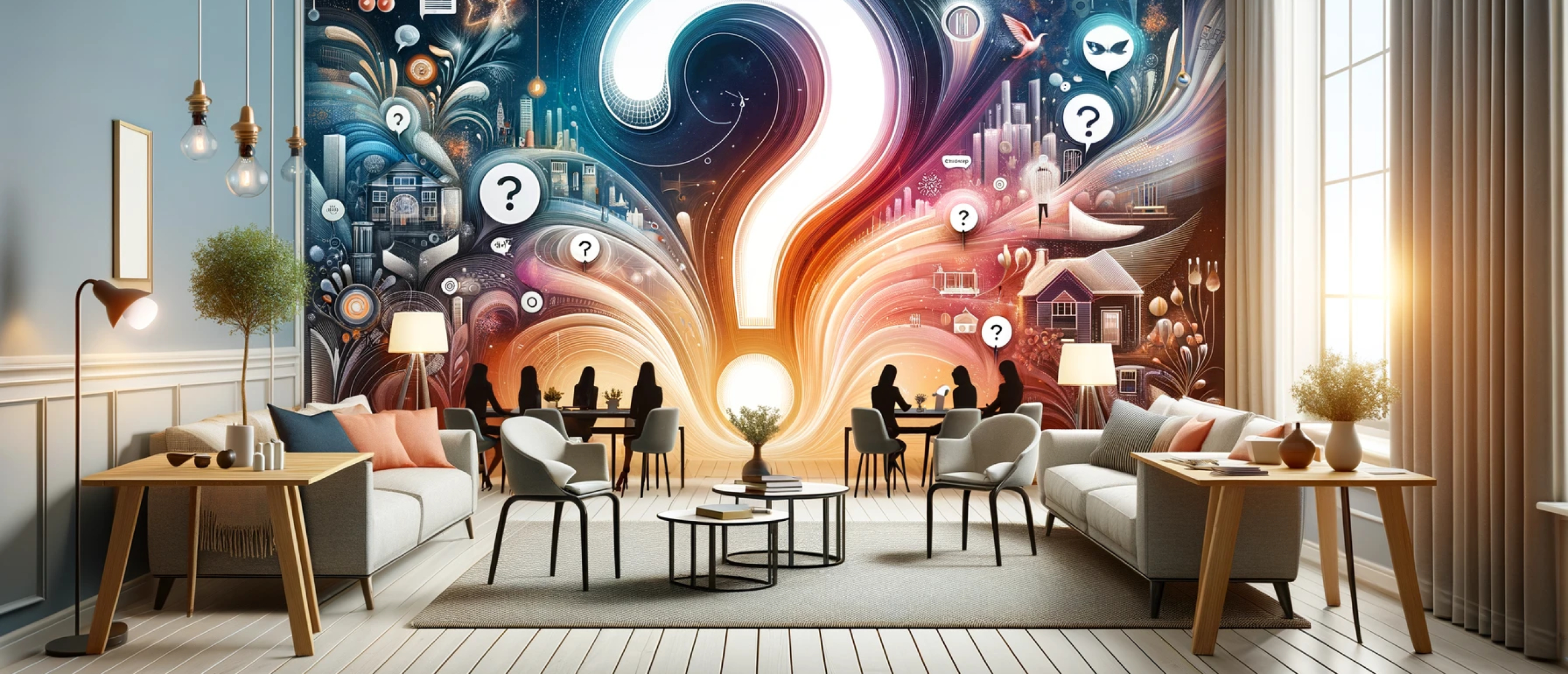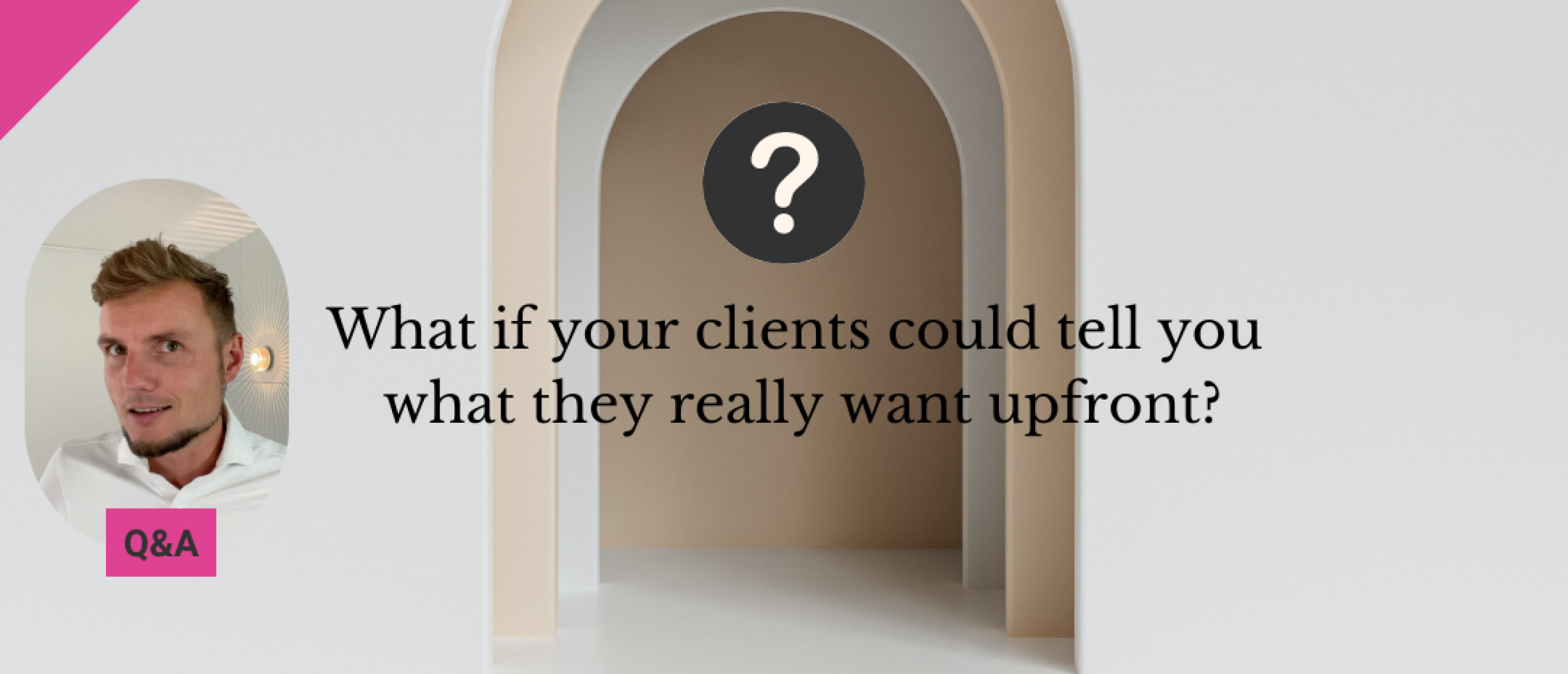Many designers see proposals as a necessary evil. A dry list of your services and the corresponding prices. But imagine your proposal becoming an immersive experience, a document that takes your client on a journey towards their future dream interior. With you. What would it look like if you designed that? In this blog post, we share an approach to transform proposals from dull documents into inspiring offers that convince clients.
Why Traditional Proposals No Longer Work
 Many proposals are dry and formal. They feel like an obligation. And they are. For you to make, because let's be honest, who enjoys that? It's a boring list of what needs to be done with a price tag attached. If that's already your approach, how does it come across to your client? These kinds of proposals can overwhelm or bore people. They lack the human touch and do not show that you truly understand what the client wants.
Many proposals are dry and formal. They feel like an obligation. And they are. For you to make, because let's be honest, who enjoys that? It's a boring list of what needs to be done with a price tag attached. If that's already your approach, how does it come across to your client? These kinds of proposals can overwhelm or bore people. They lack the human touch and do not show that you truly understand what the client wants.
What's the result? Clients see a proposal as a necessary evil, rather than an opportunity to realize their dreams. They feel no connection with the designer and do not immediately see the value you offer. This leads to hesitation and delay in decision-making. Maybe they never return the proposal because they are not convinced. Or they wait for your call to explain it, or they simply look elsewhere.
Worst case scenario, you as a designer with the solution to their challenge, are reduced to a number, a 'to-do'. Chances are, you'll never hear from them again.
Transform Your Proposals into Inspiring Interior Design Offers
It's time to change this. Here are steps to make your proposals not only informative but also inspiring and convincing.
1. Start with Your Vision of Interior Design
Begin your proposal with an inspiring vision of interior design. Share your belief and methodology, so clients immediately recognize your approach. This creates an emotional connection even before the price is discussed. Show that you understand what they want: an interior that perfectly suits them.
Preferably simple, to the point, easy to understand, and something they have already seen from you. For example, we always use the term 'Living On Your Own Terms'. Because it aligns with how we live our lives, but also how our clients live theirs. And our interior designs always reflect that.
Listen to the what Marc has to say on this:
This video snapshot is part of the Beyond Interior Design Training Program
2. Inventory of Wishes: Reality vs. Expectations
Take the time to inventory your client's wishes. This helps them realize that their project is often more extensive than they initially thought. Present this in an organized manner, so they have a clear picture of the spaces that need to be tackled. This makes your client aware of the value and scope of your capabilities but also ensures they realize that what they are asking for is not so 'simple'. This opens the door to a fair rate.
3. Why You? Show Your Unique Selling Points (USPs)
What makes you unique as an interior designer? Why should clients choose you? This goes beyond a list of your services; it's about your passion and what sets you apart from other designers. Here are some examples:
- Are you a biophilic designer? Don't just say that you bring nature into the home, but explain why you do it. Of course, you believe that integrating nature into the home contributes to the well-being of your clients, reduces stress, and increases productivity, but so do all biophilic designers. What makes you unique compared to others? Perhaps it's your extensive knowledge of specific plants you use, or your unique way of integrating nature into both large and small spaces.
- Is color your passion? Briefly explain why color is so important to you and how you developed that passion. Maybe you discovered how color can drastically influence mood and well-being. Explain how you have helped clients create their ideal atmosphere with carefully selected color palettes. What makes you different from other color-loving designers? Maybe it's your talent for finding the perfect shade that is both personal and architectural, or your unique color combinations that bring every space to life. Or do you focus on very specific shades that you know everything about?
- Do you focus on calm, understated interiors? Describe why this style is your preference and how you translate this passion into the spaces you design. Maybe you strive to create serene environments where your clients can truly relax, using soft natural fabrics and beautiful wood types. What sets you apart from other designers with a similar style? Maybe it's your attention to detail, the quality of the materials you choose, or your ability to combine tranquility and luxury in a way that is unique to your designs.

4. Pricing: Offer Three Packages
The psychology of pricing can play a major role in how attractive your proposal is. Offering three different packages is an effective strategy to guide the client to the best choice.
- Start with the most comprehensive package. This package offers everything the client needs, and a little more. It is more expensive, but it paints a picture of full service and luxury. This sets a high anchor point, making the other packages seem more affordable by comparison.
- Then present your most popular package. This should perfectly suit most clients. The price difference with the first package is significant, making this package a more attractive option. It is important that this package offers a good balance between price and value, so clients see they are getting a lot for their money.
- The last package is the basic package. Although this is a stripped-down version, the price is not much lower than the middle package. This ensures that clients are more likely to choose the middle package because they get much more for just a little more money. This plays into the psychology of loss aversion: clients do not want to feel like they are missing out on something important by choosing the cheapest package.
Sneaky? Maybe. But consider this: just like in interior design, where you use psychology to put people at ease and persuade them, you do the same with your proposal. You design a proposal that people say yes to. People often need a nudge to make the best decision of their lives.
5. Use Your Proposal as a Basis for Live Meetings
Your proposal is not just a document you send and wait for. Use it as a basis during your first live meeting with your client, your intake conversation. After you have extensively discussed their plans, it's time to get down to business. By reviewing this new 2.0 proposal together, you can immediately address questions and alleviate any concerns.
This prevents clients from immediately scrolling to the price without understanding the context. They get the chance to ask their initial questions and express their fears, which you can immediately address or reassure. Sometimes you get an immediate 'go' at the table, but often people just want to think about it a little more. That's fine. Leave the proposal behind, but fill everything in already so they only need to sign it or make a change. This way, everything is already ready on their kitchen table or desk. Just a signature and everything is set in motion.
Now It's Your Time To Move
What are you going to do to get more 'Yes' responses to your proposals? You now have the tools and knowledge to transform your proposals from dry documents into inspiring offers. By sharing your vision, inventorying your client's wishes, highlighting your unique selling points, using strategic pricing, and using your proposal as a basis during live meetings, you can make a powerful impression on your clients.
Just like designing an interior, designing a proposal is an art in itself. Use psychology to put your client at ease and convince them of your value. Remember, a well-designed proposal is more than a document; it is an experience that brings your client closer to their dream interior.
Are you ready to transform your proposals and hear more 'Yes' from your clients? Send us an email with your ideas, or leave a comment below. We look forward to hearing from you!






